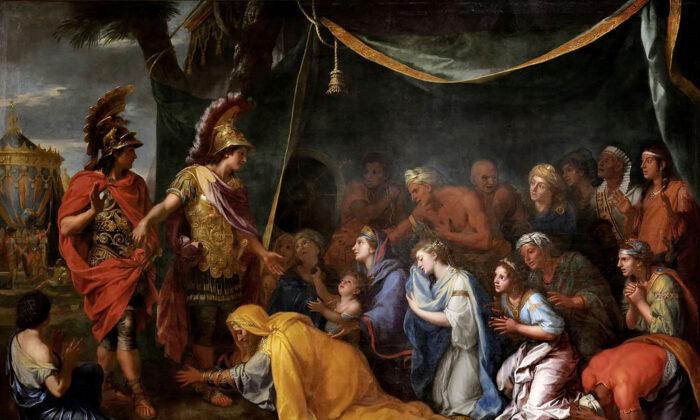NEW YORK—With New York’s finances at their worst since the Great Depression, a new plan put together by a local think-tank outlines a way for the state to save as much as $30 billion in the next three years. Among other points, the plan recommends that the state Legislature formally declare a financial emergency and freeze all public-sector wages and salaries for a three-year period.
In the next fiscal year beginning April 1, New York is expected to face a $6.8 billion budget gap, followed by a $14.8 billion gap the year after that, according to Governor David Paterson’s Division of the Budget.
“Like a runaway train, New York’s budget is in danger of derailing,” said E.J. McMahon, director of the think-tank Empire Center for New York State Policy, in a press release.
The plan comes two weeks before Governor David Paterson is expected to release his budget for the next fiscal year.
“If anyone wants to steal our ideas, we’d be happy,” said Lise Bang-Jensen, a policy analyst with the Empire Center.
In December, the governor asked the state Legislature to close a 3.2 billion gap in the current fiscal year, but they only approved a $2.8 billion plan.
“Some legislators have their heads in the sand about the severity of the state’s finances,” said Bang-Jensen.
Influential legislature leaders, including Sens. Carl Kruger and Pedro Espada, Jr., did not return a request for comment as of press time.
The plan includes cuts to health care and education spending, both of which account for 70 percent of New York state spending. New York spends twice the national average per capita on Medicaid and nearly $6,000 more than the national average per student on education.
“People think the more you spend on education the smarter kids will be, the more you spend on Medicare the healthier people will be, but that’s not the case,” said Bang-Jensen.
New York was ranked No. 25 in the nation for healthiest population in 2009 by the American Public Health Association. It was ranked No. 16 in the nation for “smartest kids” in 2007 by Morgan Quitno Press.
Paterson is likely to put health care and education on the chopping block to some extent later this month, but the Empire Center’s plan offers a way to do it thoughtfully. The plan would freeze wages, which is sure to upset teacher unions but also relieve stress on the budgets of health care and education providers so they’re in a better position to absorb cuts from the state. The plan would also put a cap on property taxes that schools are forced to pay.
The bottom line, according to the governor and echoed by the Empire Center, is that something has to be done.
And if not? “At some point we won’t be able to pay for government services, the state’s bond rating would go down … then when the state needs to borrow money interest rates go up,” said Bang-Jensen.
Basically, a downward spiral. New York state has to cut more services and infrastructure and/or raise taxes, encouraging people and businesses who are financially capable to go elsewhere. This then reduces the state’s income from taxes making it cut more services and infrastructure and/or raise taxes and so on.
Tax data has already shown that financially capable people are fleeing New York, about 1.5 million more than are coming in. While immigrants offset the population loss, the total generated tax revenue is less, costing the state about $4.3 billion in 2006 and 2007.
“New York state can’t afford to have [the Legislature] do nothing,” said Bang-Jensen.
In the next fiscal year beginning April 1, New York is expected to face a $6.8 billion budget gap, followed by a $14.8 billion gap the year after that, according to Governor David Paterson’s Division of the Budget.
“Like a runaway train, New York’s budget is in danger of derailing,” said E.J. McMahon, director of the think-tank Empire Center for New York State Policy, in a press release.
The plan comes two weeks before Governor David Paterson is expected to release his budget for the next fiscal year.
“If anyone wants to steal our ideas, we’d be happy,” said Lise Bang-Jensen, a policy analyst with the Empire Center.
In December, the governor asked the state Legislature to close a 3.2 billion gap in the current fiscal year, but they only approved a $2.8 billion plan.
“Some legislators have their heads in the sand about the severity of the state’s finances,” said Bang-Jensen.
Influential legislature leaders, including Sens. Carl Kruger and Pedro Espada, Jr., did not return a request for comment as of press time.
Health Care and Education Spending
The plan includes cuts to health care and education spending, both of which account for 70 percent of New York state spending. New York spends twice the national average per capita on Medicaid and nearly $6,000 more than the national average per student on education.
“People think the more you spend on education the smarter kids will be, the more you spend on Medicare the healthier people will be, but that’s not the case,” said Bang-Jensen.
New York was ranked No. 25 in the nation for healthiest population in 2009 by the American Public Health Association. It was ranked No. 16 in the nation for “smartest kids” in 2007 by Morgan Quitno Press.
Paterson is likely to put health care and education on the chopping block to some extent later this month, but the Empire Center’s plan offers a way to do it thoughtfully. The plan would freeze wages, which is sure to upset teacher unions but also relieve stress on the budgets of health care and education providers so they’re in a better position to absorb cuts from the state. The plan would also put a cap on property taxes that schools are forced to pay.
The bottom line, according to the governor and echoed by the Empire Center, is that something has to be done.
And if not? “At some point we won’t be able to pay for government services, the state’s bond rating would go down … then when the state needs to borrow money interest rates go up,” said Bang-Jensen.
Basically, a downward spiral. New York state has to cut more services and infrastructure and/or raise taxes, encouraging people and businesses who are financially capable to go elsewhere. This then reduces the state’s income from taxes making it cut more services and infrastructure and/or raise taxes and so on.
Tax data has already shown that financially capable people are fleeing New York, about 1.5 million more than are coming in. While immigrants offset the population loss, the total generated tax revenue is less, costing the state about $4.3 billion in 2006 and 2007.
“New York state can’t afford to have [the Legislature] do nothing,” said Bang-Jensen.




